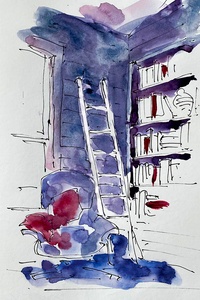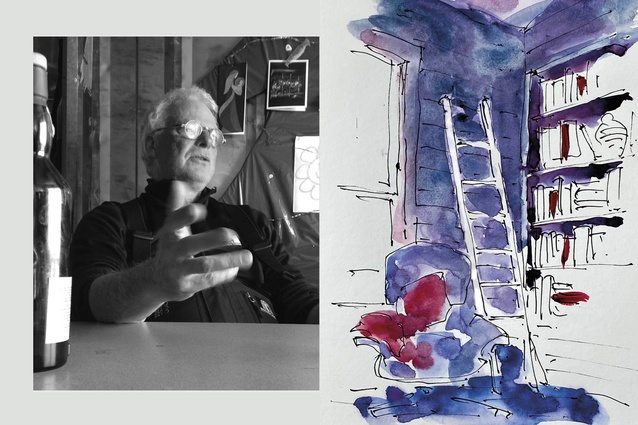A rumination on place
I missed the awarding of the country’s best work as I wasn’t there on the night, I am sorry to say. Though my relationship with the Institute has been a bit rocky since I gave back the chains of office, I do enjoy attending the annual clam bake with my peers.
I have the highest regard, too, for an award programme that, in defiance of reducing carbon emissions, still has the gang of judges unsatisfied with gazing at photoshopped pixels, choosing instead to traverse the country and get a smell of the contenders’ projects. I like, too, seeing the first hints of new practices, the up-and-comers, the new studios, their members enthusiastically bouncing to the stage, ahead of the phalanx of members of big-banger practices trooping up, and I like, too, the wry comments of the annual winners.
My absence from Ōtautahi was a far more personal thing; I am just not ready yet to return to the city of my birth now that my last parent has left it. It is a town that has already shaken about my memories and destroyed the markers of my youth and I am not quite ready for it to be a mute assembly of streets and buildings devoid of my immediate family’s breath. This is a salutary revelation: that a return to my barely recognisable home town casts me as an outlier in a place where even Shag Rock, that obelisk around which my childhood and the Avon and Heathcote Rivers pivoted as we all met the sea, has been knocked down by Ruaumoko’s restlessness.
Not long after the earthquakes, we visited the city, looking for opportunities to open a bar and help breathe a little life back into the broken and emptied town. We moved in dayglow vests through streets lined with hurricane mesh fencing, looking into those few unstickered buildings that might offer a space to set up. Of the group, I was the only one who had grown up in the town, yet, in the absence of familiar buildings, I was lost; even the street grid seemed displaced as if it, too, had come adrift and skewed into a new alignment.
We ventured down steep steps and ducked under floor joists in a half basement of a building amid a sea of shingle. In a day spent trying to find the familiar within chaotic disruption, the abrupt transition into the basement seemed to strike a familiar chord. It was not a place for investment. It was just too low, too hidden, too unanchored to be a southern toehold for our gang but, as we turned to go, I saw a triumphant scrawl on the side of a joist: ‘Eric is god’.
In a rush, this sad, small, battered place was full of the uncertainties of my adolescence and the intoxicating memories of loud music and late nights. Those few elements, the steep descent, the too-low joists that my youthful bopping head had hit, and that proclamation of the guitarist’s prowess evoked such a potent response that I wondered if ever the spaces I make conjure such intensity. Perhaps not the shrieking guitars, press of bodies and stroboscopic lights stopping swirling hair and bodies, nor of such precise recollection, but perhaps a rush of emotion to open a floodgate of memories.
“Felt in the blood, and felt along the heart;
And passing even into my purer mind
With tranquil restoration:
— feelings too of unremembered pleasure”.1
It’s a tricky business reaching for emotional impact in a process so defined by the practical issues of weatherproofing and drainpipes. I struggle with defining the ways in which my mute compositions might be brought to life, vacillating between the euphoria of a possible space loaded with emotional potency appearing on the page, and brutal self-flagellation as I imagine hearing the disdain of a disaffected client or the cool dismissal of the quantity surveyor, engineer, building inspector et al.

I find, amid the wash of those duelling emotions and uncertainties, a sense of certainty in having recourse to marking out the knowns; ‘let us put the track of the sun’ or the fall of the land, the direction of the sea breeze or the last gasp of the katabatic draughts from the south. Around these certainties we can array speculations, the processional, from arrival to hearth, the free plan, enfiladed rooms and an armature of ideas starts to form. But I have not really started; all I have is a diagram, a lifeless framework awaiting the breath of emotion.
The particularity of place is implicit in acquiescing to physical context, so much so it becomes a near immutable constraint. If there is a view to a far horizon, let us genuflect to it, so the thinking goes — no need to go outside and enjoy it with the wind in your hair, the smell of rain on the wind and the memory of childhood camping. But, what of the place of dark shadow and the comfort of calm repose from whence the mind is encouraged to travel to that far horizon? Privileging the ethereal delights of an unleashed imagination in a shadowed place is, however, a tough sell to clients with a three-page brief requesting light-filled spaces and with a laptop full of Pinterest images featuring easy indoor-outdoor flow. And, so, we gather our material, hoping that an assemblage of the newly cast and milled might be brought into concert with the fall of a shadow and, just for a moment, that the future occupants might be transfixed and transported.
On those too-rare occasions when I escape the relentless demands of a full inbox and join a ‘crit’ of student work, I deeply envy the unconstrained projects resulting from a self-determined programme. Along with having serious doubts as to whether I might be able to get into the school were I to apply today, I feel aghast at how pedantic and pragmatic I have become. My dull insistence on being able to determine the extent of the project in question and understand, at least, how one might enter, where the rain stops, where north is and so on, is, however, soon forgotten if my imagination is captured by a sublime response to a lyrical brief, or the rigorous working through of a conceptual proposition.
This is not a universally held view, some still expecting the schools of architecture to be flashed-up trade schools with graduates up to speed with current code and immediately productive. Frankly, I think one can learn all those practical things within a project when the heat goes on, but no amount of technical prowess can compensate if the lyrical, the sublime and intellectual enquiry are not evident.
Reference
1 William Wordsworth, Tintern Abbey, 1798.











